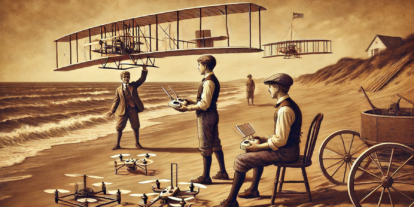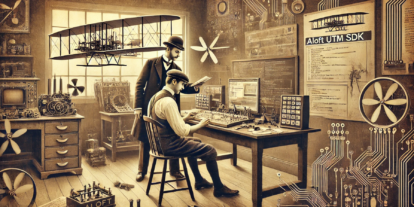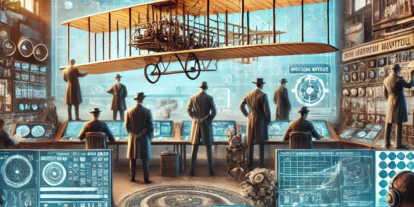“It was amazing. We were able to move around the country so effortlessly. I wish we had that kind of stuff here in the states.” says your friend Tom.
He isn’t talking about trains or buses. It’s 2025 and he’s talking about the electric aircraft revolution. There’s a sadness in his voice — America isn’t demonstrating the technological leadership it once had, and he witnessed proof of that first hand.
With each passing day of the shutdown, the United States is falling further and further behind other countries in innovation for the Commercial Drone and Urban Air Mobility industries. We see Amazon working in the UK, Wing operating regularly in Australia, and countless other small companies enjoying the fruits of innovation elsewhere in the world. The FAA employed 45,711 people in 2017. Of those, close to 18,000 that are working on rules, regulations, and the next generation of aviation in the United States aren’t able to go to work right now. They’re waiting to see when the Federal Government is going find a way forward. We all are.
While 18,000 people not showing up for work all at once is glaringly obvious thing to see, there are far more secondary effects of a government shutdown on the burgeoning commercial drone industry. Since Congress passed the 2018 FAA Reauthorization Bill, something that itself was delayed a number of times, they were determined to make up for lost time by including lots of mandates for the FAA to complete in 2019. Mandates that grow further away with each passing day. Things like, a “Flight Over People” rule for commercial drone operators, fledgling programs with private industry to demonstrate Remote Drone Identification, and the groundwork for creating UAS Traffic Management systems. These are critical programs what while initially small, will inform the path of innovation in the near future.
At Kittyhawk, we’ve seen first hand how the shutdown is affecting business. For example, people hoping to take the test and get their Part 107 Remote Pilot In Command Certificate can now no longer do so. This means businesses can’t get new employees flying. The number of Part 107 pilots is a key metric to look at when evaluating the health of the industry.
Instead of flying drones to safely accomplish their work, people are at risk of going to have to go back to using ladders, to hanging of the sides of buildings and bridges, and risk life and limb to do inspections in dangerous areas. Drones have been a bastion for worker safety and efficiency in the past few years and their potential remains still largely untapped. Companies are saving money and employees are completing dangerous jobs more safely.
Of note, one of the programs that is ostensibly being held back is Remote Identification for drones. The key learnings from early explorations will inform the rulemaking to unlock the power of the commercial drone ecosystem. It will allow law enforcement to understand who’s operating in the airspace much like license plates allow pseudo-anonymous identification on the nation’s roads and highways. And yet, it all sits untouched with each passing day of the shutdown.
Innovation and safety are not, and should not ever be, a bargaining chip. National security is a critical endeavor. But let’s not create security at the expense of innovation. Let’s create security with the help of innovation. Autonomous aviation technology, artificial intelligence and machine learning are incredibly powerful tools. Let’s move them forward for our benefit rather than hold them back to our detriment. Drones are a powerful tool that could be helping to secure the border and uphold the law of the land. Let’s not make their future a bargaining chip.
Joshua Ziering
Joshua is the Founder and Chief Security Officer of Aloft (formerly Kittyhawk), the market leader in drone airspace systems & UTM technologies. He is also a Part 61 certificated private pilot, a founding member of the FAA's Drone Safety Team, and an FAA Part 107 certificate holder.



